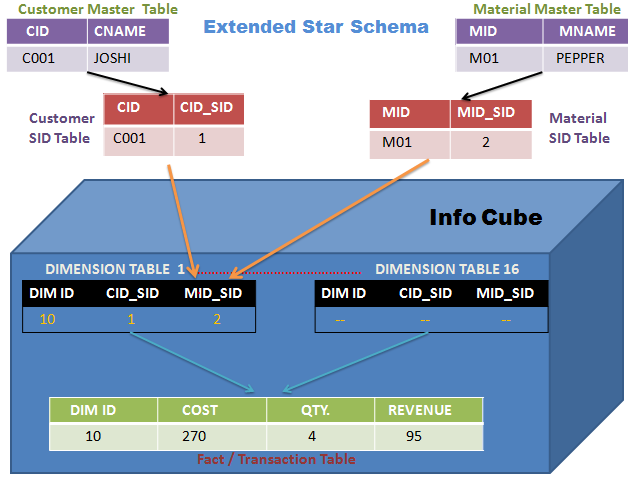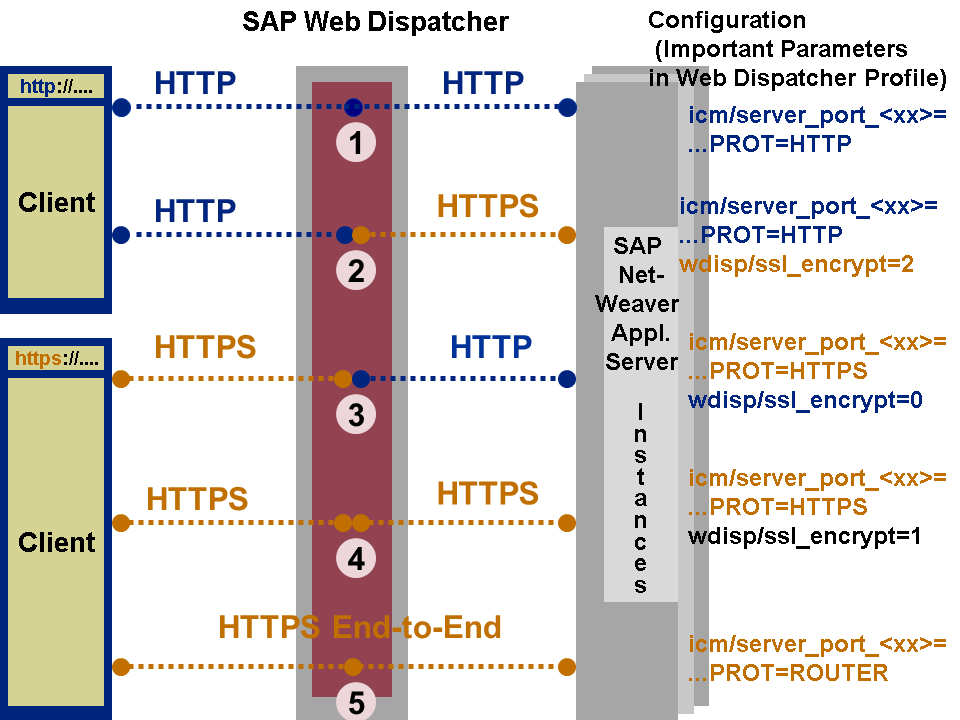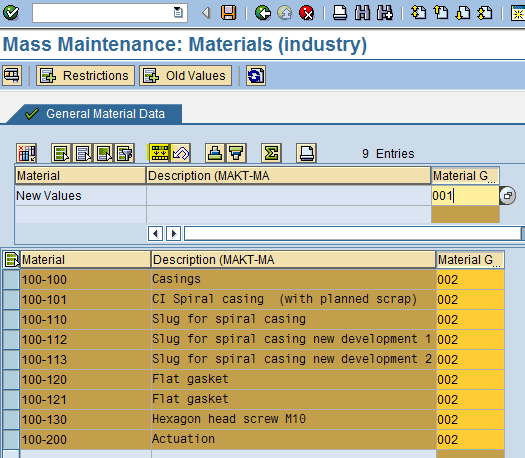- How can a planning version be frozen and unfrozen? …
- What is Release Profile? …
- What is the usage of Period Factor? …
- What determines stock categories displayed in Stock on Hand keyfigure? …
- Does dynamic alerts show up in Alert Monitor? …
- What is the report to execute MASSD?
You’ve come to the right site if you’re seeking SAP APO Interview Questions & Answers for Experienced or Freshers. There are several chances available from many reputable companies throughout the world. SAP APO has a market share of roughly 5.4 percent, according to studies. As a result, you still have the possibility to advance your career in SAP APO Development. We provide Advanced SAP APO Interview Questions to help you ace your interview and land your dream job as a SAP APO Developer.
32. Mention what is the difference between the “residual payment” and “partial payment” methods of allocating cash in account receivable ?
Demand Planning Interview Questions
SAP APO Interview Questions and Answers
A Planning Version can be frozen and unfrozen using Function Module /SAPAPO/TS_PAREA_VERSIO_FREEZE so that no further changes to the planning version can be done.
What is Release Profile?
Release Profile is used to release timeseries data from DP to SNP/PPDS. You need to define the DP Planning Area and time series key figure the data in which is released and the SNP Category Type (typically FA) to which data is released. You may maintain a Daily Buckets Profile it will define the number of working days (working days determined based on Shipping Calendar maintained for the location master) starting on and from the From Date if released online/ interactively or that many workdays of the planning horizon when release is carried out in the background. The Period Split (blank, 1 and 2) field in the SNP2 tab of the location-product master determines how the demand plan is released to SNP from DP (how bucketed data is disaggregated to the workdays).
Answer: – SAP APO provides real-time connectivity to SAP R/three. Once any change is initiated in an individual system, it is instantly transferred to others and inversely. This implies all the data, whether a sales order, purchase order, or production order. We don’t need to carry out batch jobs between systems for data transfer.
Answer: – With the help of hierarchies, one can display the elements of characteristics in the hierarchy manner and evaluate the query data for the individual hierarchy levels in the web applications.
It is a schematic that shows all the entities within the scope of integration and the direct relationship between entities.
Suppose you want to get more information on the SAP APO training. In that case, you can visit the Cloudfoundation website and get in touch with their team.
Answer: – If you want to use two tables on a single screen for Planning Data View/ Book
Learn SAP APO Certification Training Course to Build Your Skills
34. Mention what is an application, presentation, and database servers in SAP R/3 ?
Ans:
The application layer of a R/3 system is made up of the application server and the message server. Application programs in an R/3 system run on application servers. Using the message server, the application servers communicate with presentation components, the database, and also with each other. All the data are stored in a centralized server, which is known as a database server.
35. Explain what is a company in SAP ?
Ans:
Company in SAP is the highest organizational unit for which financial statements like profit and loss statements, balance sheets can be drawn according to the requirement of organizations. A single company contains one or many company codes. All the company codes in SAP must use the same COA (chart of accounts) and fiscal year.
36. Mention what is the difference between SAP BASIS and SAP ABAP ?
Ans:
SAP ABAP is the programming language used within SAP to customize, generate forms, generate reports, etc. While SAP basis is, the administration module of SAP used to control code changes, upgrades, database admin, network setup, etc.
37. List out the different types of source systems in SAP ?
Ans:
The different types of the source system in SAP includes
38. Explain what is Extractor ?
Ans:
In the SAP source system, extractors are a data retrieval mechanism. It can fill the extract structure of a data source with the data from the SAP source system datasets.
39. Explain what is extended star schema ?
Ans:
The star schema consists of the fact tables and the dimension tables. The master data related tables are kept in separate tables, which has reference to the characteristics in the dimension tables. These separate tables for master data are termed as the Extended Star Schema.

40. Explain what should be the approach for writing a BDC program ?
Ans:
The approach to writing BDC program is to :
41. Mention what are the major benefits of reporting with BW over R/3 ?
Ans:
Business Warehouse uses a data warehouse and OLAP concepts for analyzing and storing data While the R/3 was intended for transaction processing. You can get the same analysis out of R/3, but it would be easier from a BW.
42. Mention the two types of services that are used to deal with communication ?
Ans:
To deal with communication, you can use two types of services. Message Service : In order to exchange short internal messages, this service is used by the application serversGateway Service : This service allows communication between R/3 and external applications using CPI-C protocol.
43. Mention what are reason codes used in Account Receivable ?
Ans:
“Reason Codes” are tags that can be allocated to describe under/overpayments during the allocation of incoming customer payments. They should not be mixed up with “void reason codes” used when outgoing cheques are produced.
44. Mention what is the protocol does SAP Gateway process use ?
Ans:
The SAP gateway process uses TCP/IP protocol to communicate with the clients.
45. Mention what is pooled tables ?
Ans:
Pooled tables are used to store control data. Several pooled tables can be united to form a table pool. Table tool is a solid table on the database in which all the records of the allocated pooled tables are stored.
46. Explain what is an update type with reference to a match code ID ?
Ans:
If the data in one of the base tables of a matchcode ID changes, the matchcode data has to be updated. The update type stipulates when the match-code has to be updated and how it has to be done. The update type also defines which method is to be used for building match-codes.
47. Explain what the .sca files and mention their importance ?
Ans:
sca stands for SAP component Archive. It is used to deploy the Java components, patches, and other java developments in the form of. sca,. sda,.war and .jar.
48. Explain what is meant by “Business Content” in SAP ?
Ans:
Business Content in SAP is a pre-configured and pre-defined model of information contained in the SAP warehouse, which can be used directly or with desired modification in different industries.
49. Explain what is dispatcher ?
Ans:
A dispatcher is a component that takes the request for client systems and stores the request in the queue.

50. Mention what are the common transport errors ?
The common transport errors include :
51. How Can A Planning Version Be Frozen And Unfrozen ?
Ans:
A Planning Version can be frozen and unfrozen using Function Module /SAPAPO/TS_PAREA_VERSIO_FREEZE so that no further changes to the planning version can be done.
52. What Is Release Profile ?
Ans:
Release Profile is used to release timeseries data from DP to SNP/PPDS. You need to define the DP Planning Area and timeseries keyfigure the data in which is released and the SNP Category Type (typically FA) to which data is released. You may maintain a Daily Buckets Profile it will define the number of working days (working days determined based on Shipping Calendar maintained for the location master) starting on and from the From Date if released online/ interactively or that many workdays of the planning horizon when release is carried out in background. The Period Split (blank, 1 and 2) field in the SNP2 tab of location-product master determines how demand plan is released to SNP from DP (how bucketed data is disaggregated to the workdays).
53. What Is The Usage Of Period Factor ?
Ans:
Period Factor maintained in the SNP PPM or Transportation Lane determines the Availability Date of a Receipt element within a time bucket (period). The system determines the exact availability date/time of the receipt elements within a period, by adding a time interval (that it gets by multiplying the period factor with the period length) to the start time of the period. You can enter a factor between 0 and 1, where 0 is the start of the period, 0.5 the middle, and 1 the end of the period. When calculating the availability date/time, the system takes into consideration all weekdays, meaning that it does not take into consideration any days that have been defined as non-workdays in the calendars. Period Factor used is .71 = 7×0.71 = 4.97 or 5 days from ptimizer of weekly bucket resulting in a Friday. If Period Factor is not maintained in PPM or Transportation Lane then the User Period Factor indicator and the Period Factor value maintained in the Lot Size tab of the location-product combination is used. If this is not maintained a default value of 0.5 is used.
54. What Determines Stock Categories Displayed In Stock On Hand Key Figure ?
Ans:
The categories defined in Category Group ST1 (can be maintained in table /SAPAPO/APOCGC) determine the stock categories that are displayed in the Initial bucket in the Stock on Hand key figure. Subsequent buckets are dynamically computed.
55. Does Dynamic Alerts Show Up In Alert Monitor ?
Ans:
Dynamic Alerts do not show up in the stand-alone alert monitor. Network alerts are to show pegging relationships.
56. What Is The Report To Execute Mass ?
Ans:
The report for executing MassD in background job is MASSBACK.

57. What Is The Shortcut To Change Location Type In Apo ?
Ans:
Report /SAPAPO/CHECK_LOCATION_TYPE can be used to change location type (say from 1001 to 1002 or vice-versa) of existing locations in APO. The table to refer is /SAPAPO/LOCMAP. SAP does not recommend this process.
- Remark : Can you check if this works – cos I think you need to use/SAPAPO/CHANGE_LOCTYPE
58. How Can A Transaction Be Executed Even When No Authorization ?
Ans:
SE93 – Transaction code for Transaction Code E.g. CRC1 Create Resource has txn code CRASH. So if you do not have authorization to create resource you can use SE93 and enter txn CRASH and then Test F8 button to go to the txn.
59. What Is The Process To Copy Planning Versions In R/3 ?
Ans:
Use OLIX to first delete previous MRP planning versions. Then use MCB& to create the new MRP planning versions by choosing the appropriate version you want to create as ICO Version. The info structure in this case is S094.
60. How To Use Create Planning Book With Two Tables ?
Ans:
To use two tables on one screen of Planning Book/Data View – select indicator next to second page title and give name. Additional tab page is displayed in Planning Book Maintenance wizard to define the key figures for the second table.
61. What Is Master Data In Dp ?
Ans:
Master Data in Demand Planning primarily is Characteristic Value Combinations commonly termed CVCs. CVCs are the planning combinations against which data is stored in key figures.
62. How To Copy A Process Chain ?
Ans:
To copy a process chain to another process chain, goto the Process Chain you want to copy and then type copy in the tool tar and hit enter. It will allow you to copy the Process Chain to another Process Chain that can be modified as per user’s requirement, saved, activated and used.
- Remark : To copy a process chain to another process chain, goto the Process Chain you want to copy and then type copy in the tool tar also if you dropdown on the toolbad under process chain you have a copy option, but this looks cool.
63. What Is The Behaviour Of Procurement Type X ?
Ans:
Procurement Type X – source selection is based on matching due date then priority then cost. If both In-house Production and External Procuremnet is possible then In-house Production (PPM) is chosen as source of supply.
64. What Is Ppds Fixing Horizon ?
Ans:
PP/DS fixing Horizon defines the PP/DS time Fence – within that period if heuristic is run no orders get changed.
65. What Is The Reuse Mode In Product Heuristic ?
Ans:
Reuse mode in Product Heuristic – makes the system to reuse orders already present in the heuristic run i.e. orders are not deleted and recreated.

FAQ
What is DP in SAP APO?
What is PPDS in SAP APO?
What is release profile in SAP APO?
What is SAP APO stand for?
